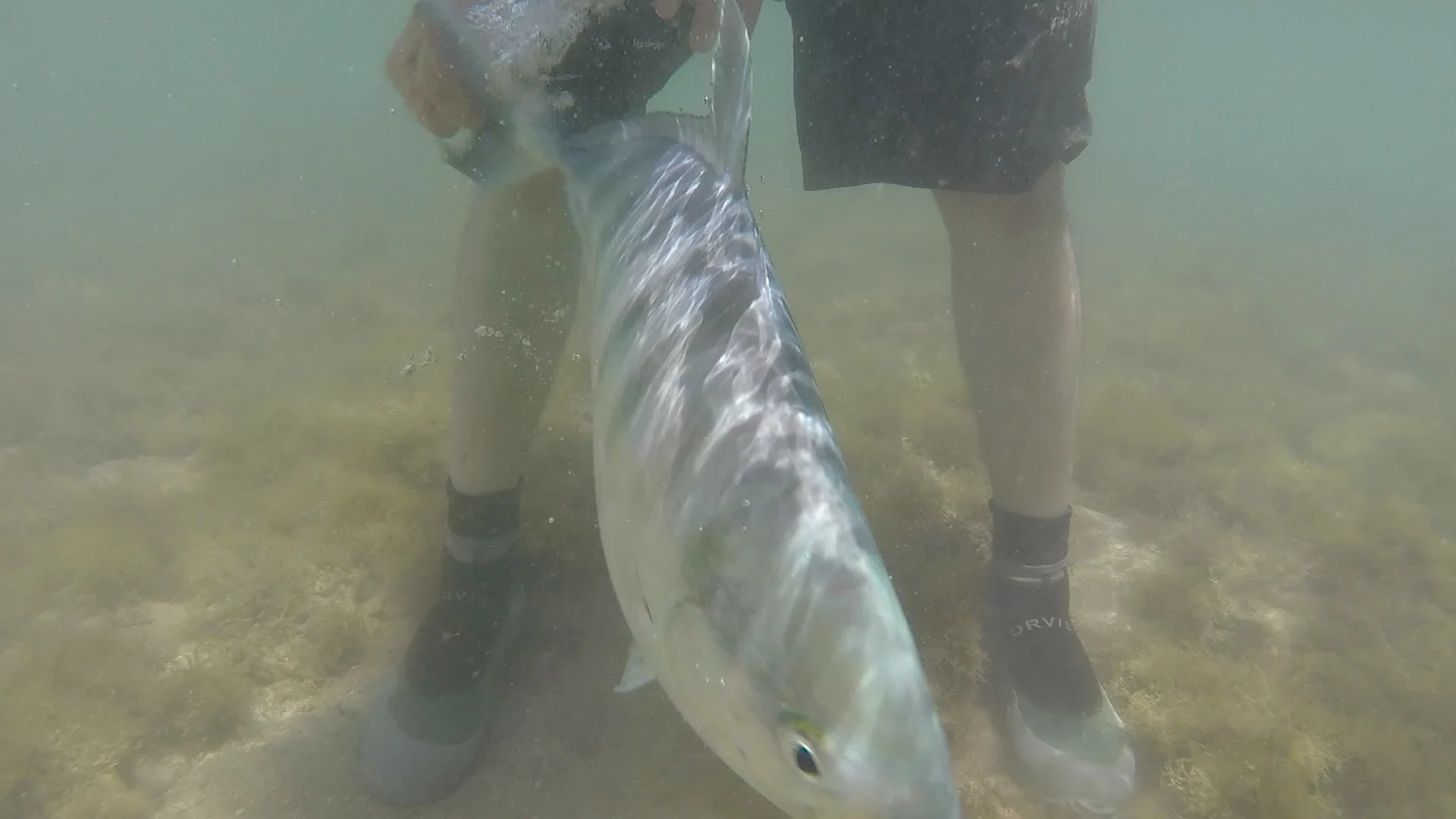Bone Fishing: The Golden Hour
/In early October, I headed out to the flats in Maunalua Bay, armed with my fly rod and artistically designed flies. I waded out to the flats on the draining tide, right before sunset- that 30-minute window of time where everything turns gold. The golden hour. I was hoping to catch one of the most technical fish to catch on a fly rod in Hawaii: the bonefish. As the tide drained and the once covered sand started to expose itself, the tails and dorsal fins of these elusive predators could be seen swirling through the water.
As I inched closer, still trying to maintain my distance, each fish that slowly crept up and beckoned me to cast in its direction moved a little further, into the deeper water. At that moment, I stopped and waited, allowing the fish to come to me. Slowly, one by one, fish from all different sectors started to slowly make their way to within 10-15 feet of where I stood. Carefully, so as not to shake the water and give away my presence, I slowly stripped them in. One fish meandered off to the right of the fly, not interested. Thinking that my fly wasn’t working, I immediately changed it to a different patterned fly that I had tied the night before.
With a new fly in hand and tied up, the next fish started to swim in slowly, gracefully, now 3 or 4 in the same pack. I casted at them and spooked every fish in that pack. Still maintaining my ground, I stood waiting, not moving, waiting for the next opportunity to cast at one of these bones. It did not take long before the next bonefish came from the Northeast direction of the wind, which made casting at the fish even more difficult. In Hawaii, the trade winds blow from the Northeast at a solid 20 knots. Casting into the wind is important, but even more difficult while fishing during the golden hour on the South side of Oahu.
All of a sudden, a fish is coming at me from approximately 30 feet away. I see it making its way to the sandbar area. The water was getting shallower and its tail was beginning to breach the surface of the water. I cast, hoping not to spook it, and left the fly in place. As soon as it gets a little closer, I slowly strip it in to give it a little bit of life. Sure enough, the bonefish rushes tail up in the water. I hook it, and it screams off in the opposite direction. Within two seconds, the hook breaks loose. This area is swarming with opportunity. The bonefish are there. Hooking them, however, is a different story. With patience, I think to myself, I have to land one of these fish.
I maintain the same area, maybe moving a little left or right, but it doesn’t matter as long as the fish can get in. I change my fly one more time for good measure, as the hook had bent a little during the last hook up. I throw on one of my red flies just in time for the next opportunity. I have about 6 fish swimming together, headed towards a small channel between patches of reef and sand. I cast in the area, leading the fish. All of a sudden, one fish breaks off from the school and rushes the fly. I strip faster, not slowing down. It chases and takes the fly with extreme vengeance. It immediately darts in the opposite direction. With my hand on the fly line, it snaps and I lose another fish, all within the first 30 minutes of fishing for these elusive bones.
By this time, the sunset and come and gone. The golden hour had faded and the sight of fish had diminished to zero. With a few more attempts, two hook ups, and two misses, I consider this a pretty successful day. Although I didn’t land any fish, this is a typical day of fishing here in Hawaii, especially during the golden hour at Maunalua Bay. The excitement of tailing fish backdropped by the stunning scenery of the Ko’olau mountains makes every minute worth it. Watching the last rays of sun brush over the land, illuminating the water, with a fly rod in hand, is the perfect ending to an October day. The hunt for these grey ghosts will continue.

